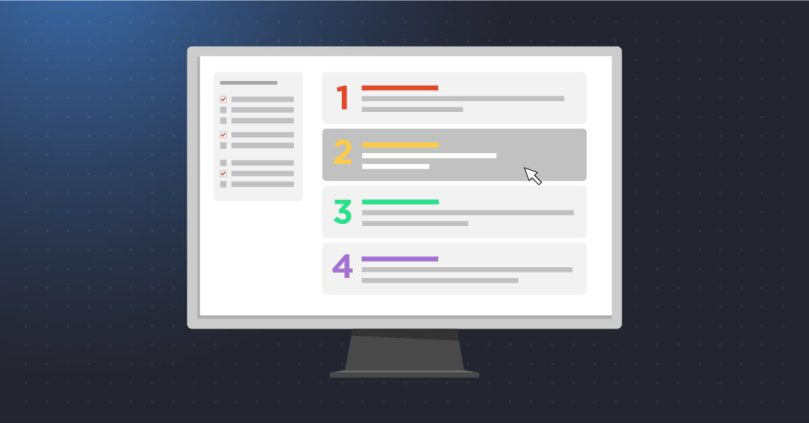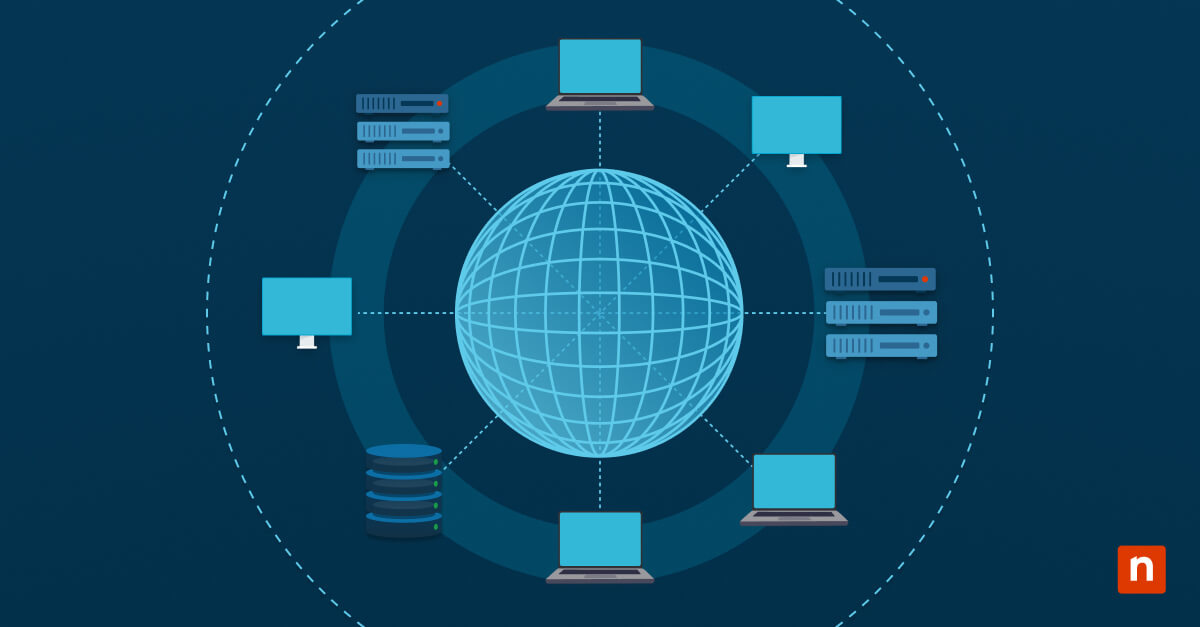Remote monitoring and management (RMM) software is among the most important IT professionals’ tools in the modern IT environment. As you probably already know, RMM tools allow IT managers to monitor endpoint and network performance, install software, deploy patches and updates in bulk, and keep the infrastructure running smoothly.
All RMM solutions are not created equal, however. As discussed in detail in our various articles related to choosing an RMM tool, feature sets vary, and some tools are more suited than others to specific use cases.
So what happens when an IT team or managed services provider has committed to an RMM tool that, over time, has fallen short? Sometimes the best solution is to switch RMM providers, upgrading to something that better serves your needs and doesn’t leave you wanting.
Such a switch can seem daunting. Will there be downtime? Service interruptions? How many resources will we have to commit to the migration? In this article, we will explore the idea of switching RMM tools to help better you make decisions about when, why, and how to change Remote Monitoring and Management solutions.
1 ) How do you know when it’s time to switch RMM tools?
The first question on your mind is probably, “Do I need to switch RMM tools in the first place?” Every situation is different, of course, but there are some signs to look out for that can tell you it’s time for a change.
The first consideration for many IT managers is cost. Many RMM providers will offer a special introductory price for new partners — a good thing at first, but over time, the additional costs and price hikes can add up to a net loss.
Or perhaps you’re stuck in a pricing tier that just isn’t paying off. RMM vendors use a variety of pricing models. These include variable price structures dependent upon which kinds of assets are being managed, costs per end-user, costs per admin or engineer, and costs per number of software agents. There are cases where this pricing worked well when you signed up but became less appealing as you added more end-users or clients.
It is also common for software vendors to require long-term contracts with their partners. This can be problematic when the service and support are not up to par or when you want to make a change to a product that better suits your needs, but a contract is all that is holding you back.
Even worse are cases where an RMM user buys a bulk set of licenses but doesn’t use all of them. This can make calculating margins a bit difficult and is generally poor use of resources.
Aside from the cost, you may be having problems with performance that have you thinking about making a change. An RMM tool is an invaluable asset, but its real value is determined by its management capabilities and ease of use. Many partners who have switched to NinjaOne report that their previous RMM tool was slow to connect and sometimes failed to create remote connections altogether. This renders the tool unreliable at best, and unusable at worst.
And ease of use is essential with such tools. RMM should be streamlining your operation and freeing up resources, not creating hurdles. If an RMM tool alerts the admin that an endpoint is not functioning correctly but doesn’t allow for quick, remote remediation, it’s not living up to the potential of what RMM can do. A tool that requires the IT manager to call a user to walk them through troubleshooting steps — or worse, forces them to send a technician onsite — it’s only providing a fraction of the value that the best RMM tools can deliver.
The patch management and alerting functionality of your current RMM tool should be considered as well. Patch management is a crucial capability of RMM tools, and they should be able to handle all of your needs seamlessly. If your RMM tool doesn’t support patch management of all operating systems, browsers, and applications in your environment(s), it forces you to either waste resources with manual updates or leave vulnerabilities in place that need to be addressed.
Finally, it’s always wise to take service and support into consideration. Are you happy with your RMM vendor overall? The level of post-implementation support should be adequate for your needs. An active and responsive community of experts and users is also a valuable asset, as such a resource can come in handy when you’re looking for quick answers or input based on experience.
2 ) What to look for when switching RMM solutions
The most important thing is to consider what you need from your RMM to achieve your goals. As obvious as this might seem, it’s essential not to overlook even the most minor aspects of your use case — and your plans. Look at your functional needs and establish a clear picture of your current requirements:
- Identify what features in your previous RMM tool you will keep using.
- Identify the issues you’re experiencing with your current/previous RMM platform and add these considerations to your checklist while shopping for a new tool.
- Identify the absolute requirements of your RMM tool, what would be nice to have, and what features you can live without
Use this information to create a “shopping list” of priorities. If you’re an IT provider who will be managing multiple clients, you will also want to examine:
- Your overall device count and what types of devices you will be managing.
- The number of sites where your RMM will be deployed, as well as any specific requirements each of these sites, might have
Once you’ve figured all of this out, you’ll be in the best position to start looking for and talking to RMM vendors. The information you’ve assembled should make it relatively easy to put together a shortlist of RMM tools that meet your technical needs.
At this point, you can start to evaluate individual vendors on ancillary aspects that will ultimately affect your long-term partner relationship.
- Security
- Server location
- Redundancy/backups
- Network capacity
- Support and service
- Implementation/switching assistance
- Customizing scripts/alerts
You want to take care when switching platforms. No one wants to change RMM tools only to find out that all of their needs are still not being met, forcing them to switch yet again.
3 ) How to successfully switch RMM tools
Once you’ve decided that switching is necessary and you’ve chosen a new RMM tool, the question on your mind will be how to perform the move to a new RMM provider with minimal hassle and downtime.
The first thing to consider is that your RMM switch will likely impact your whole IT team. Whether it’s technicians in the field, the support team who are monitoring networks and responding to support tickets, or the account admin team that needs to generate reports and maintain relationships, it is vital that they are aware of upcoming changes and are free to give any input they have based on experience.
The actual timeline of the transition will depend on several factors. Firstly, you will have to take into account your existing RMM tool’s contract renewal date. IT providers will also want to factor in customers’ agreement terms and expiration dates. Of course, your situation is a factor — some IT teams need to switch RMM tools more urgently than others depending on what kind of impact the deficiencies of their current tool is having.
With all of this in mind, you will want to set realistic timelines for deployment and integration. With such an important tool, it’s rarely a good idea to rush the implementation.
Don’t forget to find out if the RMM vendor you’ve chosen offers onboarding and setup assistance for partners or if they can recommend services that help with the changeover process.
4 ) Getting the most from your new RMM provider
Once you’ve gone through the process of switching RMM tools, you’ll undoubtedly want to take full advantage of your new solution. Our blog contains many articles about getting the most from your RMM tools if you’d like to read them in more detail, but for now, we’ll share a few highlights to get you started.
As you implement your new tool, take some time to fine-tune your alerts and notifications. RMM tools help your team focus on the most critical and urgent needs in your IT environment(s), so honing these notifications to a fine edge will go a long way in managing time and resources. The best RMM tools can create any combination of alerts, but those alarms can generate a lot of noise and waste time if they’re not set up correctly. Each IT environment is different, so taking the time to create notification standards that best fit your team’s needs is time well spent.
You will also want to maximize the potential of integrations with your other tools, ensuring communication between all of the solutions in use. When you make full use of integrations — significantly when automation can enhance the collaboration between your tools — you can save a considerable amount of time and reduce overall labor costs.
Thinking About Switching to NinjaOne?
If your RMM tool isn’t performing up to your needs or your current RMM vendor isn’t offering the support you need, consider adding NinjaOne to your shortlist of options.
NinjaOne Features and Benefits
- Month to month: no long-term contracts
- Flexible per-device pricing
- Free and unlimited onboarding
- Free and unlimited training







